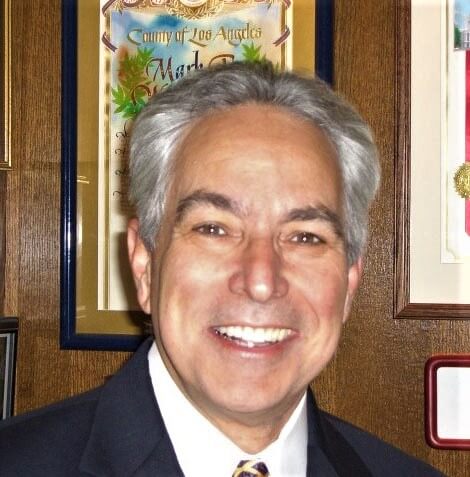Government Staffing Model Reform in a Post COVID-19 World

Unemployment Insurance and Social Security benefits are outgrowths of the Great Depression. The 2020 pandemic can likewise become an impetus for government agencies to bend to the new economy and modernize its hiring and staffing models.
Forbes magazine reports that as a result of the COVID-19 pandemic, an estimated 2.7 billion people, or more than four out of five workers in the global workforce, have been affected by lockdowns and stay-at-home measures. America is in the midst of a violent swing from a historically low unemployment level to depression-era highs.
Few if any organizations, private or public, are prepared to respond to the depth, severity, and magnitude of the changes this onslaught is having, and will have, on staffing and workplace operations in the future. While American governments are rightfully regarded as being stable and enduring, adapting to change is not generally viewed as one of their strengths. This industry characteristic does not always serve us well, particularly when experiencing and recovering from calamities. As John Drucker was keen to point out, “The greatest danger in times of turbulence is not the turbulence – it is to act with yesterday’s logic.”
Initial analysis suggests that state and local government revenues will decline by as much as 25% over the course of next year or longer as the American economy struggles to regain its footing. As much as 80% of some state and local government budgets is spent on personnel so predictably lowering staff costs will once again become a primary focus. If history holds true, governments will impose hiring freezes, institute furloughs, slash overtime and part-time hours and resort to layoffs. The adverse impacts will be particularly severe due to the stiff constraints of many archaic civil service rules and unsustainable labor agreements.
Most government work reduction plans will be dictated by rules that favor seniority above all else. Studies repeatedly show that when seniority is the principal or exclusive basis for government layoffs women and minorities suffer disproportionately. And, though senior employees possess valuable experience they sometimes lack the energy, optimism, contemporary educational foundation, technical skills, and receptiveness to change more characteristic of younger staff. When employee performance is considered in the order of separation, it is generally reserved as a seniority tiebreaker. Finally, when layoffs are required to ease the payroll burden, retaining senior employees with the highest wages is counter-intuitive.
Most government employment models are predicated on full-time employment extending unthreatened over the course of a decades-long career with job security entitlements that rival property ownership rights. This model is no longer well suited to Gen Xers and Gen Yers who now predominate in the workforce. We know that earlier generations have been characterized chiefly by their hard work and loyalty whereas Gen Xers and Gen Yers value work-life balance, innovation, and change. They change employers, and occupations, far more frequently than prior generations, and as a matter of choice. Not exactly the hallmark of most government bureaucracies.
Erica Volini, Global Human Capital leader for Deloitte Consulting, points out “A critical goal of recovery should be to pivot toward a more resilient workforce, shifting away from rigid routine and structure.” Seismic changes in government agencies may require voter approval, legislative reform and modified labor group agreements. It will not be easy or quick. However, the result will be a more agile, flexible and responsive workforce comprised of a rich mix of part-time and full-time employees and independent contractors with private, government, military and non-profit experience, knowledge, and skills.

-
Short-term assignment and other forms of temporary hiring should become routine to fill natural and unexpected workload fluctuations, as should agency-sharing of part-time employees. Job classification descriptions must permit for the alteration of hours, duties and working conditions under extenuating circumstances. Effective emergency hiring protocols during crises must be established. An additional large contingent of reserves, volunteers, retirees, and interns should be trained and ready for rapid deployment. Government agencies should elevate individual performance requirements and become more results oriented.
Understandably labor is likely to initially recoil when presented with such sweeping change proposals. However, I would argue forcefully these changes can hold many important benefits for all stakeholders. Ramping up or scaling down staff without quite so much political intervention and organizational trauma is important to the health and vitality of all organizations. A government paradigm shift that de-emphasizes employment security and tightly prescribed job classifications and salary ranges may not be bad when viewed in the context of tradeoffs. A government staffing model that more closely resembles some of America’s finest private corporations and businesses can provide more opportunities for government service, increase job mobility, utilize more expertise, skills, and knowledge available in the labor market, and enhance performance and productivity. Professional growth and versatility will be a welcome byproduct, as will more salary flexibility that rewards performance over longevity. Efforts to achieve government workforces that are more diverse and inclusive will be made easier and accelerated. Tangible and substantial economic savings in areas like overtime wages, pension, and other post-employment costs will be realized and can be reallocated when warranted.
There will always be a need for “career” government employees. A new government staffing culture need not discard that model but should adapt to include organizational elements appealing to current generations and better suited to broader societal changes.
During economic turmoil, many stock market investors have prospered buying in a market with drastically lower-priced equities. While they benefit, they are also effectively stimulating economic recovery. This proves that recognizing unique opportunities during and immediately following a crisis can be a smart play. I believe a similar smart play may be available to all employers—and particularly government–in the short-to-mid-term. If government agencies can enact necessary changes and recast their staffing models rapidly, they will surely benefit. An unprecedented high level of human resources talent will be available and searching for re-engagement in the workplace during the next few years. Government agencies that have the framework and flexibility, and enough reserves or other financing options will be well-positioned to assemble talent-rich workforces. It is an enviable and effective contrarian strategy.

CAREER ADVICE

GOV TALK





